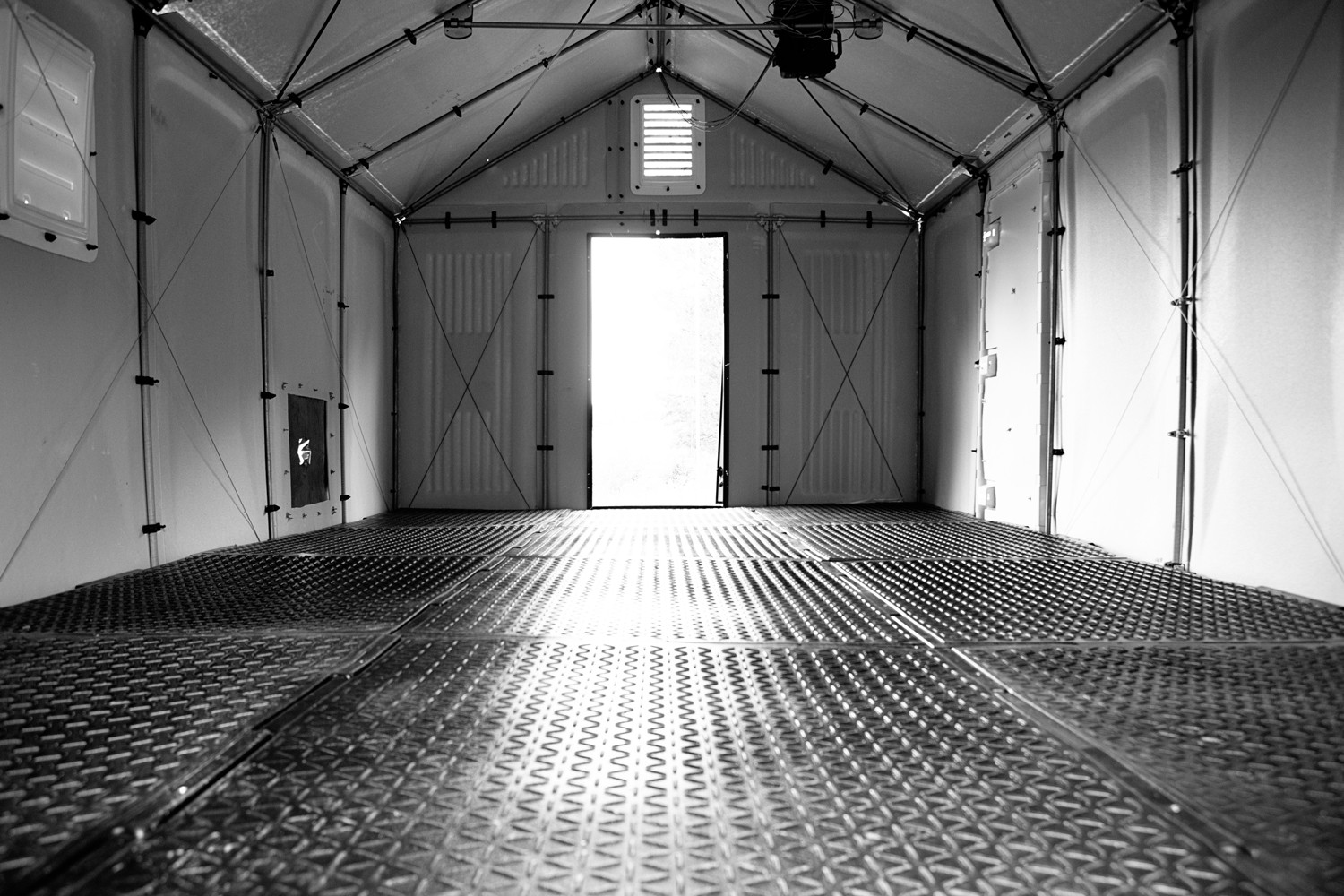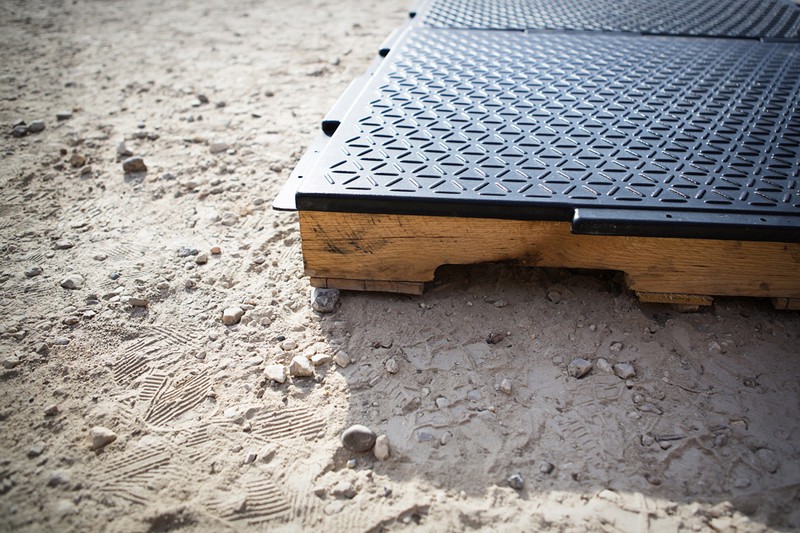

In refugee camps around the world, no matter the location or weather, there is always one constant–mud. That’s why Scott Key and Sam Brisendine, a pair of young architects, are crowdfunding the development of an “Emergency Floor” that could save thousands of lives around the globe.
“The temperature might be close to 30 degrees, but surface water is all over the site because there is no drainage,” wrote the BBC’s Greg Dawson and Jonathan Blake after visiting a Syrian refugee camp in Lebanon. “It sticks to children’s bare feet, it covers the potatoes being prepared for lunch and it creeps into many of the tents.”

The goal of the Emergency Floor project is to create a blueprint for a sustainable flooring system that repurposes waste materials readily available in refugee camps into a barrier against the dirt below. “Without proper flooring, refugee families are susceptible to infections, flooding, and hypothermia,” wrote Brisendine in an email. “These preventable conditions will claim thousands of lives and impact the well-being of millions more.”
When supplies are transported to a camp, the wooden pallets that they arrive on are often left behind. The Emergency Floor system utilizes these pallets as a base and adds a vacuum-formed cap made of recycled plastic. The cap is deep enough that insulation materials can be placed below, providing a thermal separation between the ground and those living on it. The caps also lock together, making the system modular and suitable for any size of shelter.
Even more impressive are the cost estimates. The aim is to produce the flooring for $2 per square foot, making it affordable for the cash-strapped organizations that set up and maintain refugee camps. Following winter tests in the Swedish countryside with the team from IKEA’s Better Shelter, the pair is now working on pilot schemes in Nepal and Iraq.
But getting the Emergency Floor under the feet of refugees worldwide will take investment. The U.S. Agency for International Development (USAID) has offered a $150,000 grant, but the conditions of the grant require Key and Brisendine to raise $50,000 of their own. “Once we secure this grant, USAID will be instrumental in providing guidance and making introductions to partners in the field,” said Brisendine.

To achieve their goal, they’ve turned to the crowdfunding platform IndieGoGo, where they’re about half way from their total at the time of writing. Pledging your support will get you anything from a T-shirt to a miniature Emergency Floor kit so you can build a tiny refugee camp on your living room floor.
If successful in rolling out this flooring system around the world, the pair believes it can reduce incidence of parasitic infections, diarrhea, and anemia by up to 78, 49, and 81 percent, respectively, as well as boost the cognitive development of children raised in refugee camps by as much as 96 percent. “This is not to mention the restoration of dignity to families living through their worst days,” said Brisendine. “Our goal is to make raised flooring a basic provision to those living in temporary homes around the world. We are well on our way.”


How We Get To Next was a magazine that explored the future of science, technology, and culture from 2014 to 2019. This article is part of our Design & Innovation section, which looks at new devices, concepts, and inventions that are changing our world. Click the logo to read more.
